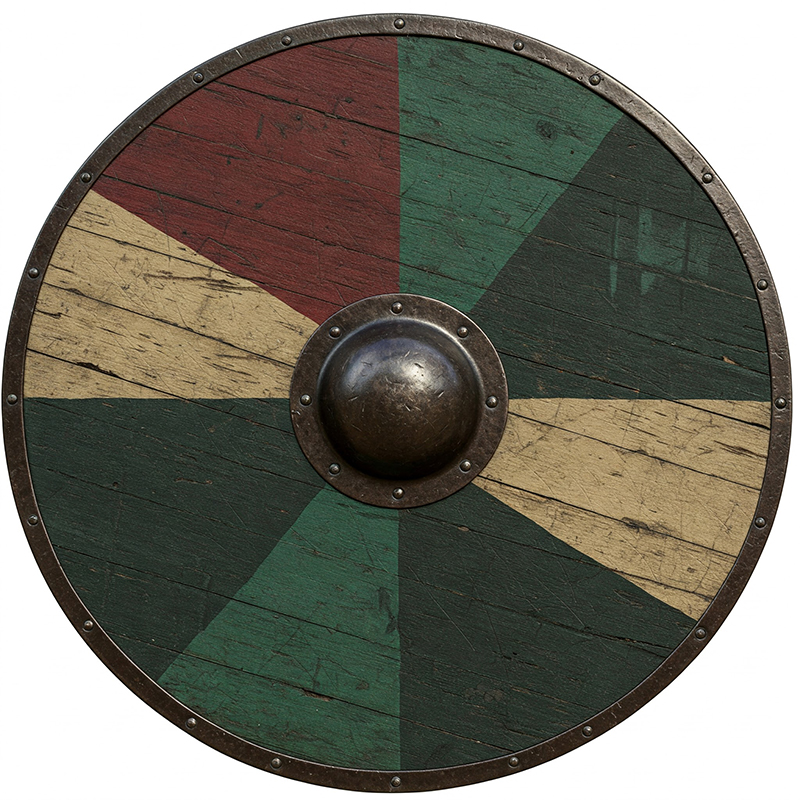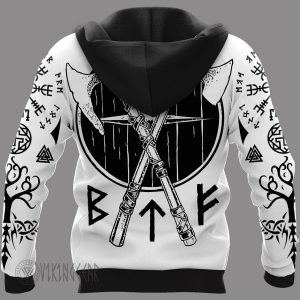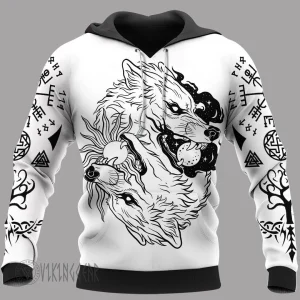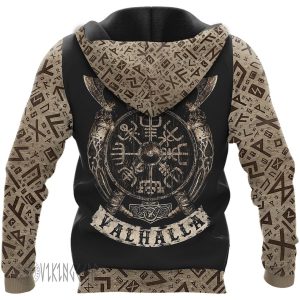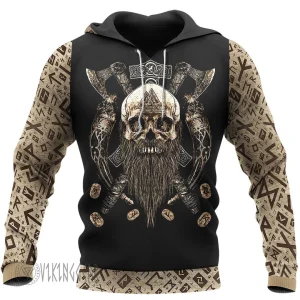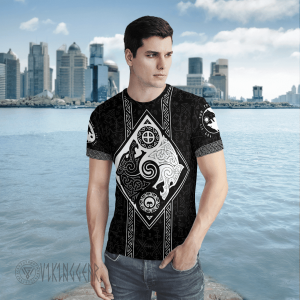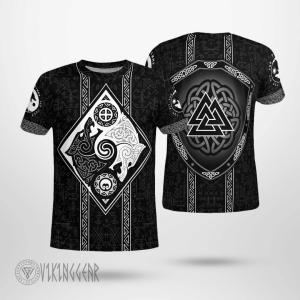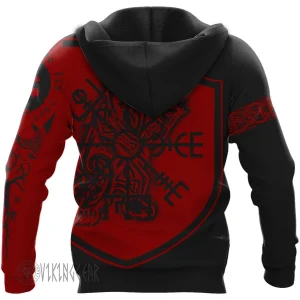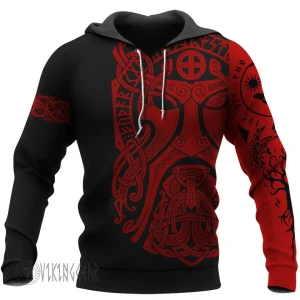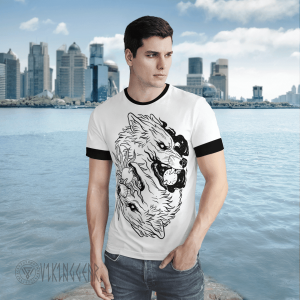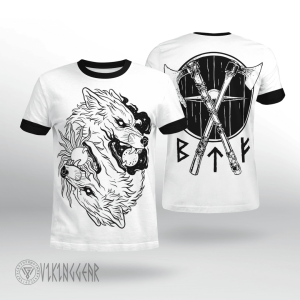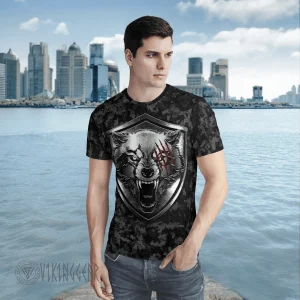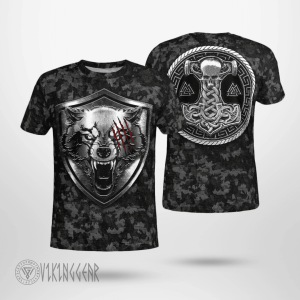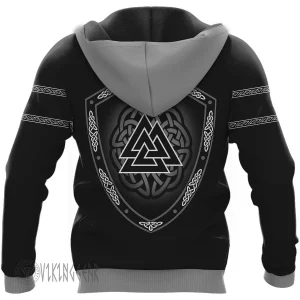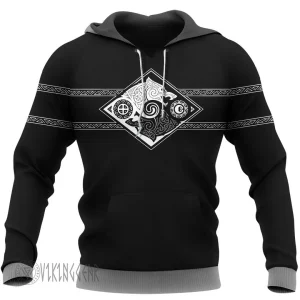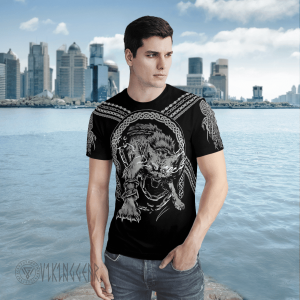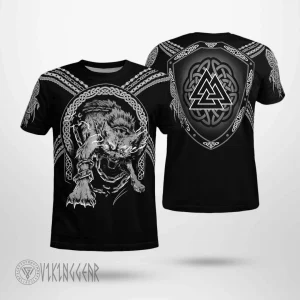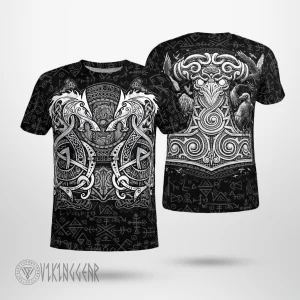Viking Blog
10 Fascinating Facts About The Viking with a Shield That You Didn’t Know!
Vikings are often shown as fierce warriors. They wore horned helmets and carried shields while raiding Europe. The image of a Viking with a shield is iconic. It represents their strength and battle skills. Yet, not all these images are accurate. Vikings were a much more complex people than the common stereotypes suggest.
Vikings were Scandinavians who lived between the 8th and 11th centuries. They gained recognition for their exceptional seafaring skills, exploring and conquering new lands. Yet, they were also farmers, traders, and craftsmen.
Let’s explore 10 fascinating facts about Vikings that you may not have known! We will explore their culture, beliefs, and customs. This will help us understand these fascinating people better.
1. Vikings Did Not Wear Horned Helmets
This is one of the most common misconceptions about Vikings. There is no historical evidence that they ever wore horned helmets in battle. Richard Wagner’s 19th-century opera, Der Ring des Nibelungen, made horned helmets popular. Instead, Vikings wore simple iron helmets that provide better protection in combat.
2. Vikings Were Skilled Sailors
People knew Vikings for their outstanding seafaring skills. They built longships. They could cross the open ocean and navigate rivers and shallow waters. This made them very versatile. These ships were light and fast. Builders constructed them with advanced techniques. This let the Vikings travel far and settle in Iceland, Greenland, and even North America.
3. Viking with Shield: Fierce Warriors
They became known for their fierce fighting. They used many weapons, like swords, axes, and spears. They wore armor for protection. Their combat strategies scared their enemies. Viking warriors often fought in formations. Shields were key to their tactics. A famous tactic was the “shield wall.” Warriors aligned their shields to block enemy attacks. The barrier was almost impossible to penetrate. A Viking with a shield was a fearsome sight on the battlefield. They used their shields for both defense and offense.
4. Vikings Had a Rich Culture
Vikings had a complex and vibrant culture that included mythology, laws, and traditions. They believed in gods such as Odin, Thor, and Freya, and had a sophisticated system of governance. Viking sagas share tales of heroism, adventure, and legendary figures. Generations have passed them down. Also, Viking society valued honor and loyalty. This shaped their laws and social structure.
5. Vikings Were Traders
Vikings were not raiders. They also possessed skill as traders. They established trade routes across Europe and beyond. They traded goods such as furs, timber, and even slaves. Viking merchants journeyed to the Byzantine Empire and the Middle East. They traded Nordic goods for silver, silk, spices, and glassware. Their trading networks connected different cultures and helped spread ideas, technology, and language.
6. Vikings Were Farmers
Most Vikings were farmers who grew crops such as barley, wheat, and oats. They also raised livestock like cattle, sheep, and pigs for food and trade. Farming was vital for Viking communities. Many warriors returned home to tend their farms after raiding. Also, Vikings used innovative farming techniques, like crop rotation. They kept the soil fertile and increased yields.
7. Vikings Were Skilled Craftsmen
Talented artisans, Vikings created beautiful works of art, jewelry, and weapons. They were also expert metalworkers and carpenters, crafting high-quality tools and vessels. Their intricate metalwork, including brooches and arm rings, showcased their artistic abilities. Viking longships showed their advanced woodworking skills. They built durable, efficient vessels that made them maritime rulers.
8. Vikings Had a Written Language
Vikings used a written script known as runes. Skilled artisans carved these runes onto stones, weapons, and other objects. They conveyed messages and recorded history. The Vikings used the Younger Futhark alphabet for writing, memorial stones, and magic. Some runestones still exist today. They provide valuable insights into Viking society, beliefs, and important historical events.
9. Viking with a Shield and Belief in Valhalla
In Norse mythology, a grand hall honored warriors who died in battle, known as Valhalla. It was a place of eternal feasting and glory, overseen by Odin. Warriors who aimed for Valhalla showed courage in battle. They believed they would join Odin’s army in Ragnarok, the foretold end-of-the-world fight. Yet, not all Vikings went to Valhalla. Some believed in Helheim, the realm of the dead ruled by the goddess Hel.
10. Vikings Eventually Converted to Christianity
By the 11th century, Christianity had become the predominant faith among the Vikings. This ended the Viking Age and caused major cultural changes. Many Viking leaders, like King Harald Bluetooth of Denmark, adopted Christianity. They encouraged their people to do the same. This change came from more contact with Christian Europe and new alliances. It also came from building churches and monasteries in Viking lands.
Viking with a Shield
Vikings used various types of shields, the most common being the round shield. Craftsmen made these shields of wood. They reinforced them with leather or metal for durability. They had a central iron boss. It gave extra protection and was a weapon in combat.
Shields were not for defense; they were also used as weapons. Viking warriors also decorated their shields with unique symbols. These patterns showed their identity or loyalty. Shields’ colors and designs could show family, achievements, or magic.
In battle, shields played a crucial role in Viking warfare. The “shield wall” formation let warriors protect each other and resist attacks. Vikings also used shields in duels, deflecting blows while counter attacking with precision. A Viking with a shield was a key figure in combat, demonstrating both skill and resilience.
Conclusion
Vikings were more than raiders and warriors. They were also explorers, traders, farmers, and craftsmen. Their rich, influential culture and mythology left a lasting legacy. Their shipbuilding, tactics, and craftsmanship made them a power in the medieval world.
Vikings were not fierce warriors. They were diverse and skilled people. Their society had structure, laws, and impressive achievements. They excelled in trade, exploration, and artistry.
A Viking with a shield was more than a warrior. They embodied a civilization’s courage, strength, and skill. In battle, trade, or exploration, a Viking with a shield is a symbol of its legendary history.
We hope this article has helped you learn more about Vikings! If you have any questions or thoughts, feel free to leave a comment below!

